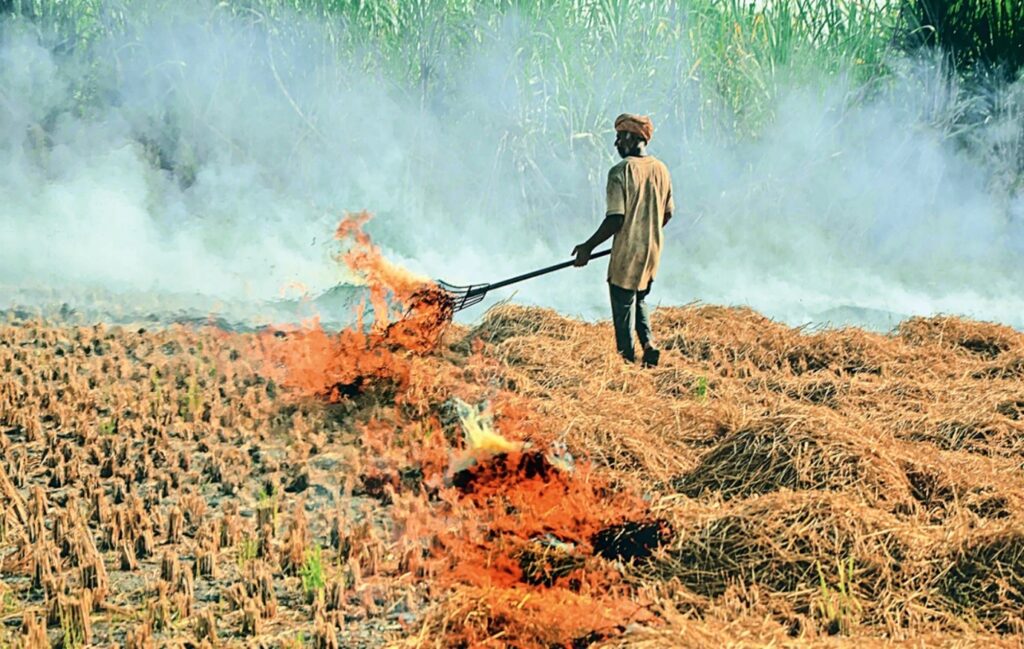A study featured in The Lancet found that pollution from landscape fires, including winter agricultural burning in northern India, may have contributed to over 1.2 lakh deaths each year in India between 2000 and 2019.

What is Wildfire and Its Types?
- Wildfires are unregulated fires that spread across natural areas like forests, grasslands, and savannas. They can be triggered by natural events, such as lightning, or by human actions like agricultural practices and land clearing.
Types of Wildfires
- Forest Fires: These fires take place in forested areas and can spread quickly, especially during dry weather and strong winds.
- Grassland Fires: Often referred to as prairie fires, these occur in grassy regions. While they can aid in ecosystem renewal, they become destructive when uncontrolled.
- Vegetation Fires: Fires in shrublands and other vegetation types are included in this category. They are often worsened by prolonged drought conditions.
- Agricultural Burning: Widely practiced in many regions, particularly in northern India during the winter months, this involves burning crop residue to prepare fields for new planting. This activity is a major contributor to air pollution.
What are the Global and Local Impacts of Landscape Fire Pollution?
Global Impact:
- Global Death Toll: According to a recent study in The Lancet, landscape fires contribute to over 1.53 million deaths annually worldwide due to air pollution, with the majority occurring in low- and middle-income nations.
- Health Impacts: The research indicates that fine particulate matter (PM2.5) from these fires is linked to around 450,000 deaths annually from cardiovascular diseases and 220,000 from respiratory illnesses.
- Regional Differences: Countries such as China, India, Indonesia, Nigeria, and the Democratic Republic of Congo experience the highest death rates associated with air pollution from landscape fires.
Local Impact (India):
- Annual Mortality in India: Between 2000 and 2019, landscape fires in India are estimated to have caused approximately 2.55 million deaths from respiratory and cardiovascular diseases, averaging over 120,000 fatalities annually.
- Seasonal Air Pollution: Northern India faces severe air quality deterioration during the winter months (October to December), as agricultural burning combines with cooler temperatures, trapping pollutants near the ground.
- Impact of Socio-Economic Disparities: The study reveals that wildfire-related deaths are four times higher in low-income countries compared to high-income ones, with economically disadvantaged regions facing heightened health risks from fire-induced air pollution.
What are the steps taken by the Government to the wildfire?
- Forest Protection Division: Led by the Deputy Inspector General of Forests, this division is responsible for overseeing forest fire management at the national level.
- Community Participation: The government promotes community involvement in forest fire management through initiatives like Joint Forest Management Committees (JFMCs) and Eco-Development Committees (EDCs).
- National Action Plan for Forest Fires (NAPFF): Launched in 2018, this plan emphasizes collaboration between forest communities and state forest departments to mitigate forest fires.
- Forest Fire Prevention and Management Scheme (FPM): This government-funded program supports states in effectively preventing and managing forest fires.
Way forward:
- Empowering Community Management: Strengthen local community involvement in wildfire prevention and control by providing training, capacity-building programs, and incentives through platforms like Joint Forest Management Committees (JFMCs) and Eco-Development Committees (EDCs).
- Utilizing Technology and Research: Adopt advanced tools such as satellite-based fire monitoring systems and invest in research to develop fire-resistant plant species, reducing the frequency and impact of wildfires and their contribution to air pollution.

